Why You Should Avoid Patent Portfolio in Spreadsheets
Although spreadsheets are convenient for monitoring a company’s finances or creating a mailing list, you may want to switch to something more efficient when it comes to managing a large patent portfolio. Even Microsoft has stated that using Excel as a general purpose business management tool isn’t a good idea. Multi-user access is challenging, the smallest input error can have massive consequences, it’s difficult to control access to data and integrating Excel with other applications can be a nightmare.
To understand how in-house lawyers are managing their patent portfolios, I spoke with several IP consultants at PatSnap to learn about their clients’ habits. Surprisingly, many of them, including businesses with large patent portfolios, are managing most of their IP on a spreadsheet. Unsurprisingly, they’re finding this process inefficient and frustrating because:
- Spreadsheets are static and must be updated manually
- Spreadsheets aren’t multi-user friendly, which makes it hard to track changes within a shared document
- It’s harder to categorise data in spreadsheets
- Spreadsheets are prone to human error, leading to inaccuracies in data
- It’s difficult to integrate spreadsheets into other docketing tools
- There’s limited visibility on the progress of a project, so bottlenecks can’t be identified
-
Spreadsheets are static
An Excel spreadsheet is not a database—it’s static, so to keep information up to date, in-house lawyers have to update it manually. If you’re managing a large patent portfolio with thousands (or tens of thousands) of patents, this can take up a big chunk of your time. If there’re changes to the claims or patent ownership, you have to manually change the spreadsheet. Furthermore, if you’re using spreadsheets to monitor your competitors’ patents, you need to access databases such as the USPTO and copy all the information into a spreadsheet. This is a monotonous and productivity-sapping process.
To ensure efficiency and accuracy, in-house counsel should use software tools that automatically extract, store and update patents from disparate databases. For example, with PatSnap, all data comes directly from the patent offices, saving you the laborious task of updating multiple spreadsheets. Using a tool like PatSnap gives you visibility on your portfolio as well as alerting you to any changes in your competitors’ (or any tracked) portfolios.

Email alerts for changes in latest graphene related patent applications (Source: PatSnap platform)
-
Spreadsheets aren’t multi-user friendly
Spreadsheets can be shared through email, but can you imagine sending an email with a large file containing your company’s entire patent portfolio? It’s near impossible. And if you were to break the file into multiple spreadsheets and send the information bit by bit, how would you track changes within different versions of the spreadsheets?
Multiple users can access centralised patent intelligence software without interfering with the data. For example, with PatSnap, you can share up-to-date patent documents with your colleagues, and see each other’s changes and instructions—all in one place. No worries about duplicated effort.

Multiple workspaces or categories for different projects (Source: PatSnap platform)
-
It’s harder to categorise data in spreadsheets
Law firms usually send huge spreadsheets with instructions to in-house lawyers. However, these spreadsheets often contain thousands of uncategorised patents, making it tedious to filter through them.
Using a patent intelligence tool, such as PatSnap, lets you extract data from your spreadsheet and categorise patents based on the instructions attached to them. This makes it easier to step out of a painful addiction to Excel—the alternative being learning to use countless and complex Excel codes. PatSnap’s user-friendly interface lets you quickly categorise all relevant pieces of information and save them in your workspace. For example, you could create a list with patents due for renewal or expiration, using just a few clicks. You set the criteria you want and the platform does the rest. This way, you can spend time extracting value from your portfolio, rather than manually collating it.
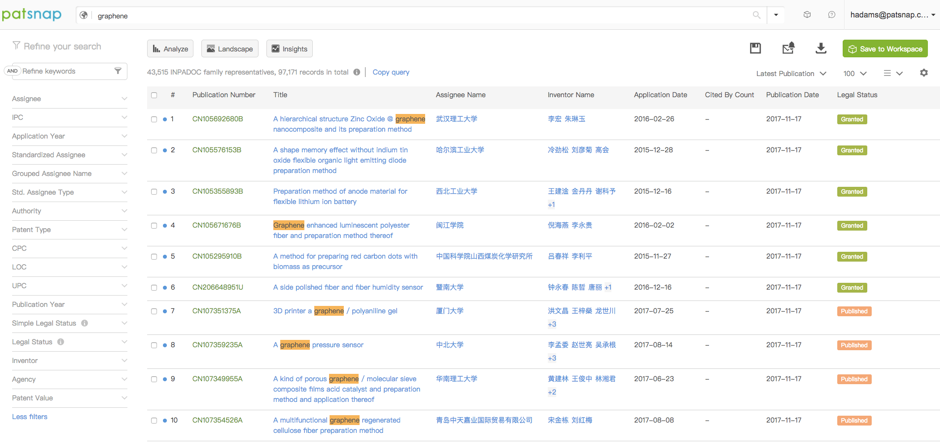
Filter options to categorise patent data (Source: PatSnap platform)
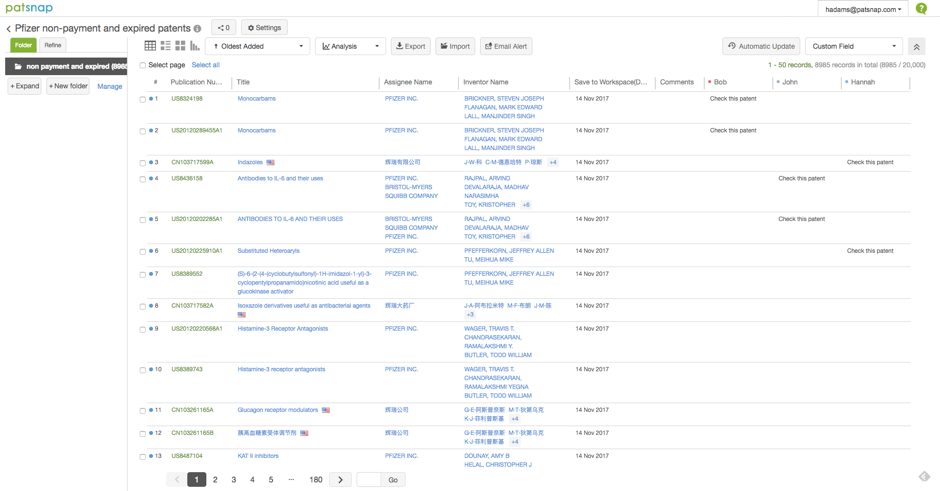
Workspace folder for Pfizer’s patents which are expired or have outstanding payments (Source: PatSnap platform)
-
Spreadsheets are prone to human error
One erroneous spreadsheet input could be disastrous to the entire analysis being carried out. Machine learning algorithms in IP intelligence software can remove this problem. For example, before data being extracted from patent offices are added to the PatSnap platform, they’re crawled repeatedly by data cleaning and data normalisation algorithms. These compare the content and data points in patents against accurate mirror images. This not only weeds out human error before patents are added to the platform, but the process continues afterwards as new information comes to light.
-
It’s difficult to integrate spreadsheets with other docketing tools
Many businesses adopt a hybrid approach to managing their portfolio—using spreadsheets and various docketing systems. However, their data being scattered across different systems means creating reports and conducting analyses can be a never-ending ordeal—especially if they have a large patent portfolio.
For example, if you want to create a report for senior managers, you have to collect different data sets from different tools, export them into spreadsheets and merge them into a report. Although this could be useful for unidimensional data points (such as IP litigation trends), it may not be useful for analysing multidimensional data sets (such as technology trends).
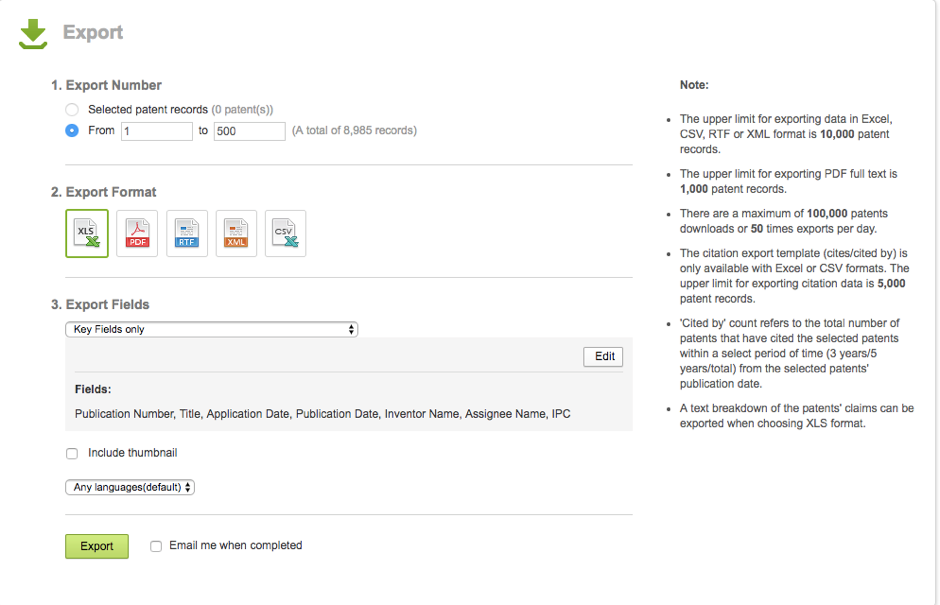
Export data into different formats (Source: PatSnap platform)
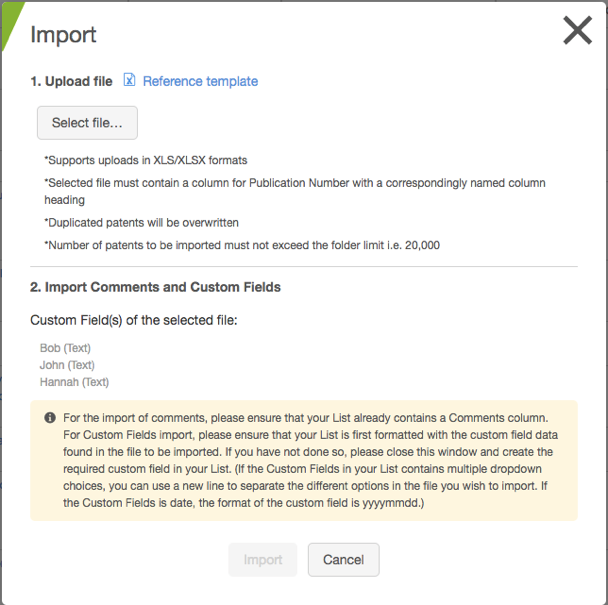
Import data from spreadsheets into PatSnap (Source: PatSnap platform)
PatSnap’s algorithms are capable of analysing and finding patterns across multiple data points, making the platform ideal for handling multidimensional data inputs. This can help you create actionable reports in an instant.
-
Spreadsheets give limited visibility on the progress of a project
When a patent attorney and engineer are working on a project, they may send spreadsheets back and forth for specific tasks. But using a spreadsheet makes progress tracking difficult and your ability to identify bottlenecks is compromised.
Having a system where multiple employees can manage work and track projects, makes portfolio management more efficient. With PatSnap, you can leave comments or instructions in online workspaces—this notifies colleagues about which patents require attention and steps to be taken. You could also create separate workspaces for employees, especially if each employee specialises in patents relating to a particular industry or technology area. This makes task allocation and progress tracking much easier.

Leave comments for colleagues (Source: PatSnap platform)

Share management of work with colleagues (Source: PatSnap platform)
You might be thinking, “But using spreadsheets is free!” I assure you, there is a cost of free. Free costs money in the form of missed opportunities and litigable errors.
But it also costs the one thing you can’t save up, buy back or defend in a court of law—the priceless gift of time.
Your recommended content
-

Patsnap Surpasses US$100 Million in Annual Recurring Revenue
Category: Article | Category: News/PR
Wednesday, June 12, 2024
Patsnap has reached a significant milestone of achieving $100M in Annual Recurring Revenue (ARR), marking an impressive 20% year-over-year growth in 2023. This milestone highlights the massive and meaningful value our platform brings to over 12,000 IP and R&D teams across 50 countries, driving efficiency, productivity, and collaboration.
-

Introducing Hiro, an AI assistant built for IP and R&D workflows
Category: AI advancements | Category: AI development | Category: AI-tools | Category: Article | Category: artificial intelligence
Tuesday, May 14, 2024
Powered by Patsnap’s industry-specific LLM, Hiro is designed to streamline IP and R&D workflows from ideation to product launch. With its robust AI capabilities, Hiro brings a new level of efficiency, precision, and security to tasks that were once time-consuming and labor-intensive.What sets Hiro apart is that it draws from our large language model that’s been trained on market-leading patent records, academic papers, and proprietary innovation data. This ensures we deliver more accurate and reliable results for every prompt.
-
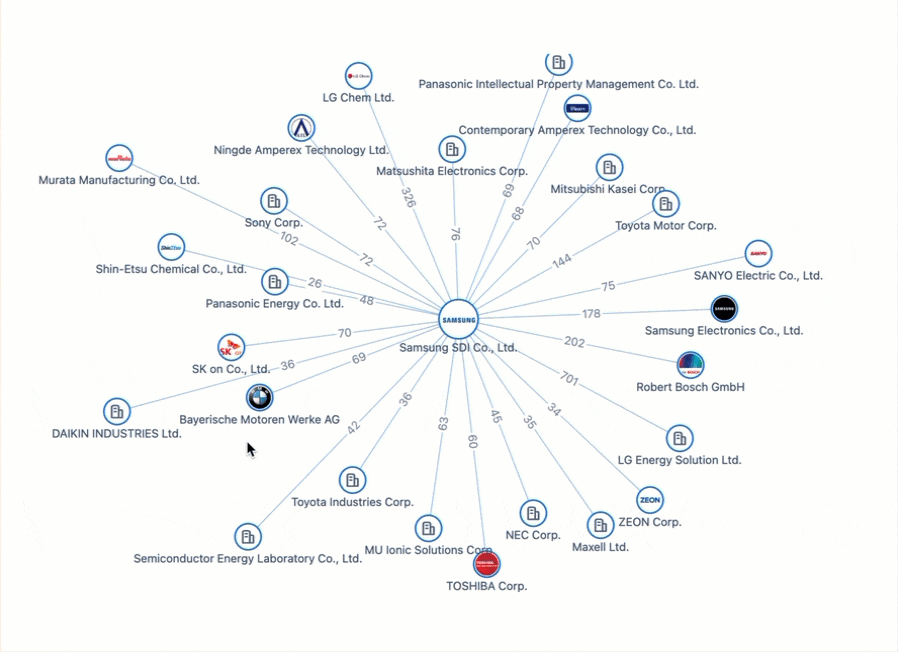
Powering the Future of Electric Vehicles: The Battle for Battery Innovation and Patents
Category: Article | Category: battery technology | Category: electric vehicle | Category: EV | Category: lithium ion | Category: lithium ion battery | Category: NEV | Category: new energy vehicles
Monday, April 22, 2024
In the ever-evolving landscape of innovation, the electric vehicle (EV) industry stands as a beacon of technological transformation. As we explore the patents propelling the EV revolution, Apple's venture serves as a poignant example of the challenges even industry giants face in this competitive arena. Join us on a journey through the global patent landscape, where the quest for superior power solutions unfolds, and where the true pioneers of the EV revolution are making their mark.